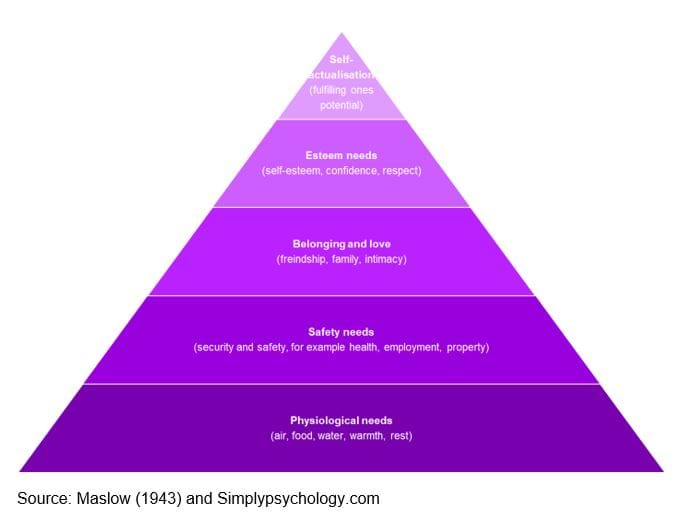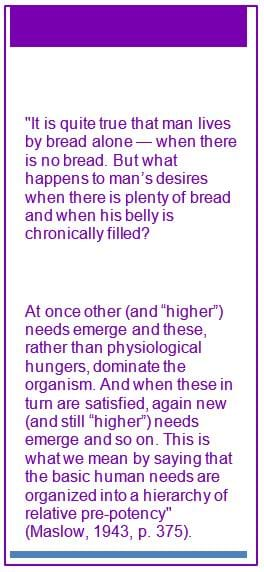Exploring Pedagogy - Introducing Abraham Maslow

Many of us are familiar with Maslow but how influential are his theories and whether now, as we attempt to return to some sort of normality, is a good time to revisit his hierarchy of needs?
Abraham Harold Maslow was born on 1 April 1908 in Brooklyn, New York and was the eldest of seven. He had a difficult childhood experiencing poverty, racism and ethnic prejudice and a difficult relationship with his mother who it is said he grew to despise. Maslow spent a lot of his childhood in libraries where he developed a love of reading and learning. Maslow graduated from City College, New York and then the University of Wisconsin where he studied psychology. He wrote his thesis on ‘learning, retention, and reproduction of verbal material’ but felt his work unworthy. Maslow joined the faculty of Brooklyn College and later Brandies University where he continued his research and expanded his understanding of the human mind. Maslow died following a heart attack in June 1970.
Although Maslow did not do active service in the Second World War, the impact of this on individuals did inspire him to explore the importance of self-actualisation. This, along with the support of colleagues, formed the basis of Maslow’s research into mental health and the potential of individuals.
Maslow’s most known work is his hierarchy of needs; depicted as a pyramid, this five-tier model identifies human needs. The model can be divided into basic needs, psychological needs and self-fulfilment or growth needs.

Instead of focusing on the negative aspects of human growth Maslow focused on the positive, seeking to identify how we reach our full potential.
Maslow stated that people are motivated to achieve certain needs and that some needs are more important than others. Our first and most basic need is rooted in our survival so this will be what motivates us first; when that need is met, we will move on to the next need and so on. However, that is not to say we will not regress; life events, such as illness or loss, may result in our needs changing.
As individuals we will perceive our needs differently. For some, financial or economic success is important, for others success may be achieved in our relationships.
Over time Maslow refined his theory recognising that as individuals our needs are not rigid and for some people self-esteem is more important than being loved or, being fulfilled creatively is more of a need than some of the most basic needs.
Shortly before his death Maslow expanded his theory to include cognitive, aesthetic and transcendence needs, although the original five-tier model is what is widely referred to.
When we apply Maslow's theory to our early years practice, we know the importance of ensuring children feel safe and secure; to provide that secure foundation for learning and development is key.
The Early Years Foundation Stage sets the standards all early years providers must meet to ensure children learn and develop and are kept healthy and safe. The safeguarding and welfare requirements cover the steps providers must make to keep children safe and healthy and therefore meet their basic needs. The learning and development requirements shape the activities and experiences for children and identify the goals children should be working towards to meet their psychological and self-fulfilment needs.
However, we should not simply be applying this model only to the children. For ourselves and for our colleagues this model can shape and support our wellbeing, happiness and continuous development. As we return to some sort of normality, we must ensure our basic needs are met to support our own learning and growth.
Consider a time in your life where you prioritised the first three levels of the pyramid because of significant events, or time where you were able to focus on self-actualisation because the rest of the pyramid was secure. What does self-actualisation look like for you?

References
Department for Education. Statutory Framework for the Early Years Foundation Stage: Early adopter version. (2020) London: Department for Education.
Maslow, A. H. (1943). A theory of human motivation. Psychological Review.
McLeod S. (2020) Maslow’s hierarchy of Needs [online] [Accessed 04-05-2021]


